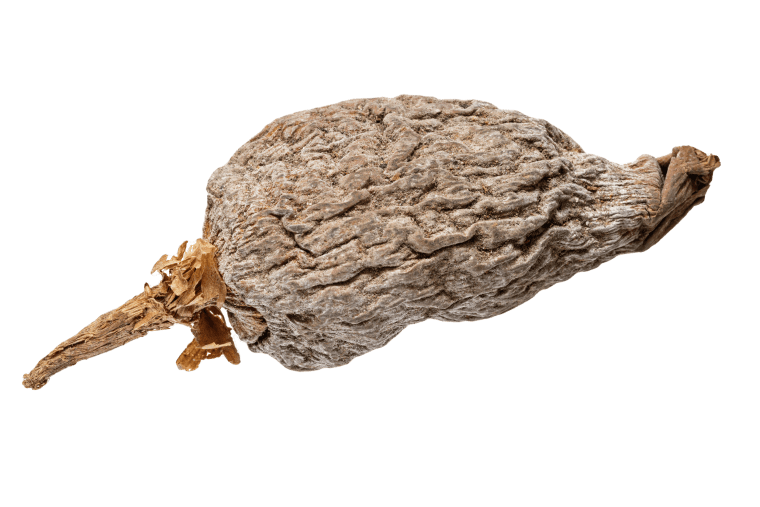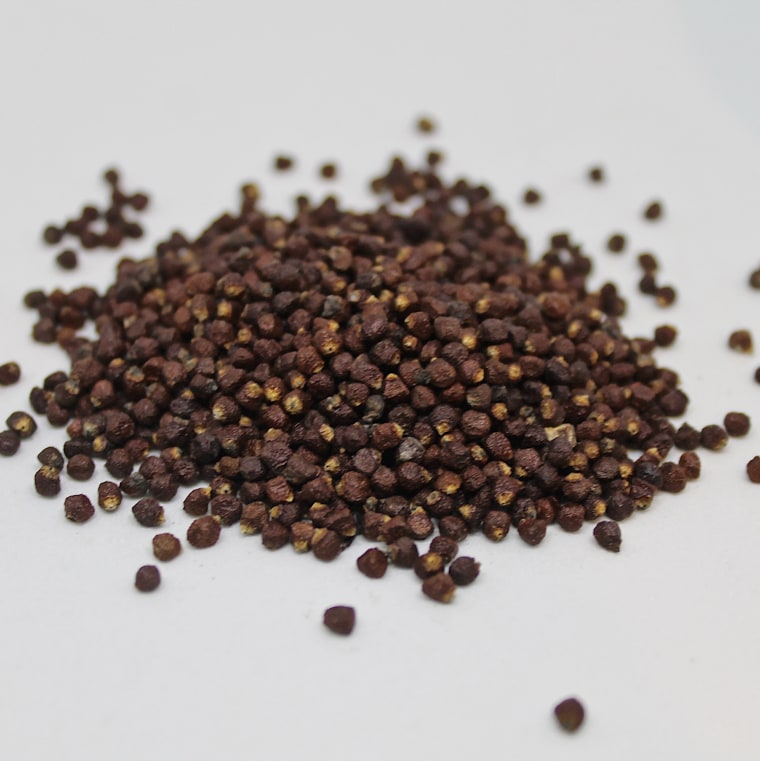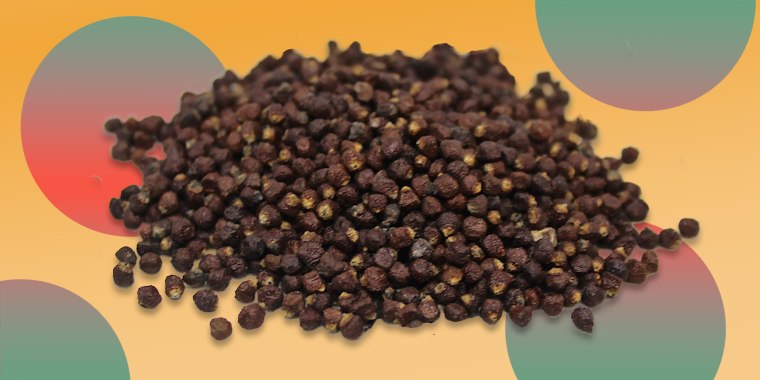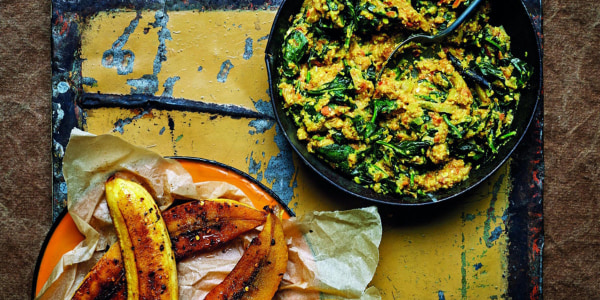Black, pink, red, white and green — all colors of peppercorns you have seen, heard of or have in a grinder in your cupboard. They are all bright, punchy and a staple for most cuisines across the globe. However, there is a “new” (but actually ancient) pepper in town, alligator pepper (Aframomum melegueta), which got its name from the reptilian-like bark on the seeds' pod. Its seeds are also commonly known as grains of paradise because it was claimed by medieval spice traders that these peppery seeds grew only in Eden and had to be collected as they floated down the river, out of paradise. (We love a good origin story.) Other names for these seeds are melegueta pepper, Guinea grains, ossame or fom wisa.
What is alligator pepper?
Native to West Africa (which is sometimes fittingly referred to as the Pepper Coast) and a member of the ginger family, this pepper plant can grow up to five feet tall. It has thin, lance-like leaves that produce trumpet-shaped, purple flowers. As the flower blooms, it begins to develop into 5-to-7-centimeter-long, grayish-brown, wrinkled, alligator-skin–like, dried pods that contain the very small seeds.

During the harvesting season, men and younger children will go collect the pods from the plant while women remove the seeds from the pulp by cracking it open and smacking them out with their hands or the side of a knife. The seeds are then placed on leaves and left out to dry in the sun. Once completely dried, they are tightly wrapped inside the leaves and sold.
The whole plant is used, not just for its peppercorns, but also for medical purposes: The rhizomes (aka rootstalks) are traditionally used as antimicrobial and antifungal remedies; the long leaves are used as a treatment for measles and gastrointestinal issues; and the seeds have anti-inflammatory properties.

Alligator pepper is a good source of various minerals, including calcium, magnesium and zinc. The amino acids, which are used to build proteins, found in alligator pepper include l-Threonine; humans don't naturally produce this amino acid so we need to get it from our diet. Alligator pepper contains many antioxidants, which come in the form of flavonoids, tannins and terpenoids, providing benefits that include scavenging free radicals in the body that can cause inflammation.
How do you use alligator pepper?
Once crushed, the seeds release a combination of flavor notes — from the initial pungent, peppery flavor to a floral aroma with hints of jasmine, cardamom and clove. It's a little nutty, earthy, citrusy and can even have menthol and eucalyptus notes. If you bite into one, you’ll notice that the peppery heat slowly intensifies and develops on your palate. They are great used as a spice rub for fish, especially if you toast them in a dry frying pan before crushing.
I personally use a scant amount every day as a substitute for coarse ground black pepper. I love the bold eucalyptus and citrus notes for salad dressings and pesto, for example. It works amazingly well in a compound butter, spiced baked goods and spiced fruit syrups. My cookbook includes at least 50 recipes where there’s a dash of this magic in various stocks, stews and marinades. You can also use it to make your own African peppercorn spice mix by toasting and grinding it with cubeb (Ashanti pepper). My local gin distillery, Gaslight, in the Hackney Wick neighborhood of east London, uses it to infuse their amazing botanical creations, for example. The possibilities are endless.
For a super zingy, easy peanut-based sauce, add 1/4 teaspoon crushed alligator pepper to the peanut butter of your choice with a pinch of sea salt and a healthy glug of high-quality oil.
Once you try it, you’ll understand exactly where to place it in your pantry and recipes.


